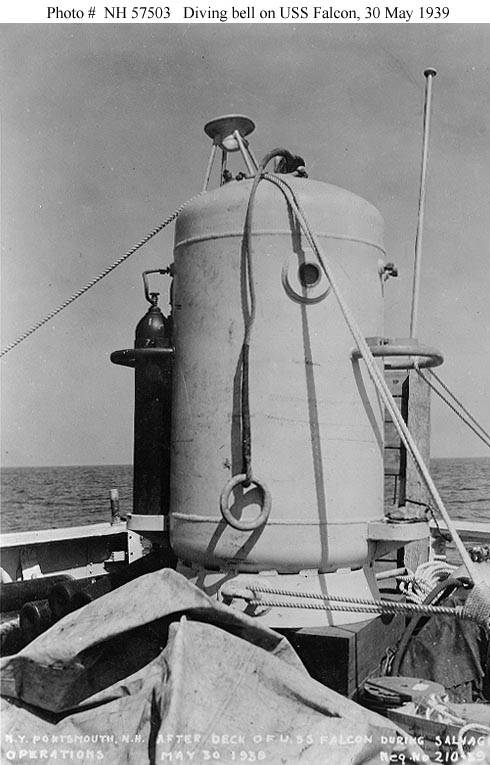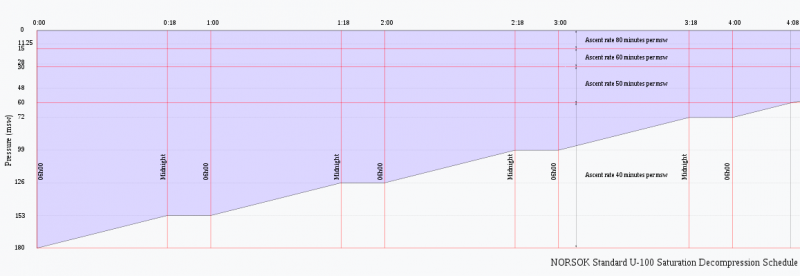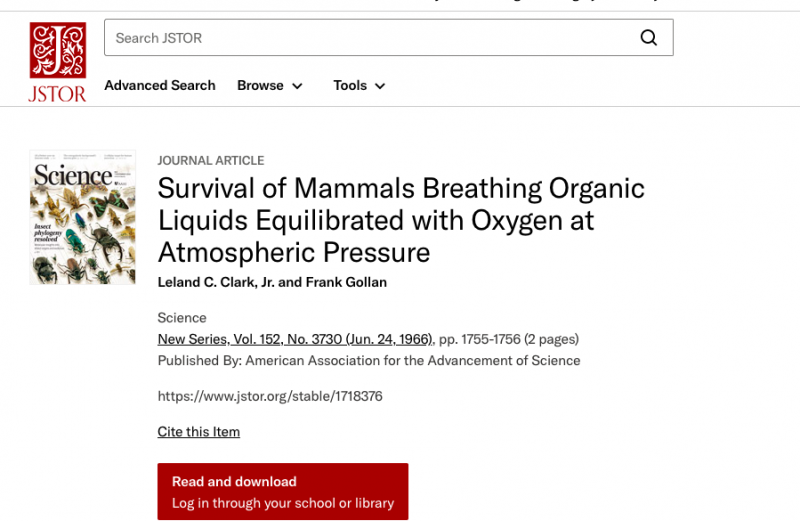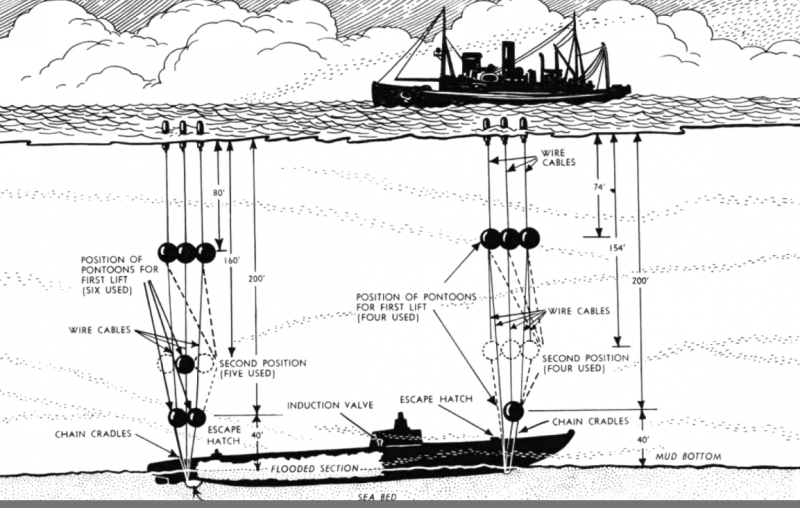"Breakthrough" research of Russian scientists in the field of liquid breathing: the real state of affairs
prehistory
In December of the now distant 2017, during a visit to Russia, Serbian President Aleksandr Vucic was shown an experiment in which a dachshund was immersed in a specialized flask filled with respiratory fluid.
This event was covered by the Russian media like this:
It would seem that the news feed is old by modern standards - why do you have to return to it already in 2021?
The fact is that the then advertising campaign for the developments of Russian scientists had its effect. As a result, in the comments to my last article Expert assessment of the equipment of Russian combat swimmers comments appeared with the following content:
In this regard, I decided to highlight the real state of affairs in this direction.
Relevance of the problem
Jacques Mayol was born in Shanghai in 1927.
This man is notable for the fact that while others dreamed of flying, Jacques's fantasies were directed to the underwater world. Moreover, the conquest of the depths of the sea was supposed to be without the use of any auxiliary technical means - without equipment and holding the breath.
When a person dives into depth, the pressure acting on the chest increases by 1 atmosphere every 10 meters and already at a depth of 40 meters is 5 atmospheres.
Physiologists of that time believed that a person physically could not dive deeper than 50 meters while holding his breath, as this would lead to the destruction of the chest and injuries incompatible with life.
However, Jacques Mayol dived. At first 50, then 60, and then 100 meters.
Examined the reasons why he managed to survive after such dives. And physiologists were the first to discover new, "undocumented" functions of the human body, as the legacy of our underwater ancestors. It turned out that the body of each person still "remembers" some of the adaptive mechanisms that allow it to adapt to being at a depth. Later this mechanism was called "blood shift".
The blood shift consists in the flow of blood from the peripheral regions of the body to the central, especially to the capillaries of the pulmonary alveoli. Thus, the blood inhibits the compression of the lungs under high water pressure, allowing diving to depths well in excess of 40 meters (theoretical limit without taking into account blood shift).
This effect made it possible to make a jump from 40 meters to 100 meters, and later to 170 meters.
This is exactly the result (171 m, to be precise) managed to achieve the Frenchman Loic Leferm in the category "no restrictions".
Running a little ahead, here is Jacques Mayol in the 1982 program Around the World. On the question of who was engaged in research on the influence of pressure on a living person.
However, further movement is impossible for a person.
At some point, destruction of the chest and / or collapse (collapse) of the lung can occur, which is guaranteed to lead to death.
The use of breathing apparatus solves the problem by creating pressure inside the lungs equal to the external one. However, the deeper the depth, the more gas is required.
So, for example, a standard 12 liter cylinder filled with 200 bar at a depth of 200 meters will last only 6 minutes in a calm state, without taking into account stress and physical exertion.
Another problem with the gas solution is that nitrogen and helium penetrate the tissues, saturating them under pressure, necessitating decompression. Its total time for divers working at great depths, in the maximum saturation format, is a whole week.
Above is an example of a decompression profile for a dive of 180 meters. Once again, I will note that we are not talking about short-term diving, but about working at depth on a “rotational” basis.
Therefore, for the underwater work of a team of several divers, a whole support vessel with high-performance systems for the preparation and storage of gas mixtures is involved.
And, it would seem, "Rogozin's invention" allows for a breakthrough in this area. And there are no competitors. That is, we are faced with another product,
However, not all so simple.
And other countries have quite objective reasons for the absence of such decisions.
Let's take a look at the difficulties that stand in the way of implementing this tempting idea.
1 problem
Breathing is an extremely complex process that includes complex mechanisms of external respiration (how inhalation occurs and how gas enters the lungs) and internal respiration (gas transport, exchange of gases between blood and tissues, and cellular respiration).
In order not to burden the already cumbersome material, I will simplify some things for the sake of saving time and simplicity of presentation, but the meaning will remain unchanged.
In the alveoli of the lungs, gas exchange takes place between alveolar air and blood. The transport function in the blood is performed by hemoglobin, while it transports gas in two directions - it gives CO2 to the lungs, which it took from the body tissues before, and takes oxygen, which then delivers it to the tissues. In tissues, the process is reverse - oxygen is released, and CO2 is "captured" for transport to the lungs.
Since we live on the surface, the entire gas exchange system is balanced against normal atmospheric pressure. And on the surface it works what is called a Swiss watch. But the clock starts to skip when the balance is disturbed. With increasing pressure, the partial pressure of gases changes, which depends on two quantities - the percentage of gas in the mixture and, in fact, the pressure.
At a certain pressure, the affinity of oxygen with hemoglobin increases to such an extent that the latter loses its ability to transport CO2 of fabrics. This ultimately leads to rapidly developing severe damage to the central nervous system with subsequent loss of consciousness, convulsions and death.
This scenario is just one of many.
Each gas in the mixture must be balanced. This fact determines the use of different gas mixtures for different depths in technical diving. The diver starts diving on one gas, then (upon reaching the set depth) switches to another, and, reaching the end point of the dive, switches to the so-called “bottom gas”.
When rising, the gases change in the opposite direction.
Usually oxygen, nitrogen and helium contents are combined. The bottom gas contains the maximum amount of helium and the minimum amount of oxygen.
And the dive ends with an extreme decompression stop at 5–8 meters on pure oxygen.

How does this relate to the liquid breathing experiment?
As long as the experiments are carried out at constant pressure, there are no problems. But during the descent and ascent, the pressure will change. This means that it is necessary to change the content of the gas dissolved in the respiratory fluid. In laboratory conditions, the liquid can certainly be prepared in advance. But how can this be done in a compact breathing apparatus? It is completely incomprehensible.
2 problem
It was not by chance that the dachshund was placed in the solution vertically, head downward.
The fact is that the animal was clearly previously injected with something that blocked the respiratory center, reducing excitability (the developers themselves spoke of such a need to suppress reflexes).
The position of the dachshund vertically upside down eliminates the complete filling of the lungs with liquid.
Why is it so important?
The fact is that the alveoli are covered from the inside with the thinnest layer of pulmonary surfactant.
Next, let me quote:
Without it, the lungs simply collapse (like the walls of a wet cellophane bag).
That is, to resume breathing after switching from liquid to air, the work of the resuscitation team will be required.
It is argued that modern fluids are free from this disadvantage. In reality, it should be understood as follows: they are better than the first samples.
But they do not make the reverse transition (from liquid to gas) safe.
3 problem
There is one more very delicate problem.
The fact is that the lungs are not the only air cavity.
There are also the maxillary sinuses and the inner ear.
Ideally, it is necessary to remove air from there and also fill them with liquid. In theory, this is possible. Similar manipulations are carried out in specialized conditions by a trained doctor. But not on a submarine in distress.
If an engineer looks at the inner ear diagram, then (from an engineering point of view) he will not see any major problems. However, the complexity is largely due to medical aspects.
The fact is that all internal cavities are stuffed with specific receptors, including extremely sensitive ones.
For example, the inner ear contains receptors for the vestibular apparatus.
Scuba divers may be familiar with the uncomfortable feeling of dizziness on ascent, which occurs when the pressure is not evenly balanced. The brain receives different signals from the left and right ear. And he cannot navigate in space.
The inner ear itself is separate from the pharynx. It is also no coincidence.
The question of the influence of reflexes and receptors in this project is practically not worked out.
This is a very broad topic. And it will simply not be possible to disassemble it all in one article. But as an example, the influence of the receptors of the nasolabial triangle can be demonstrated.
During the competition, freedivers sometimes pass out in the water.
The reflexive laryngospasm prevents water from entering the lungs, breathing stops.
At the same time, when a person is raised to the surface, the first thing to do is remove the mask from him and blow on his face. Receptors recognize the action of air. The brain understands that the environment is safe to breathe. And it resumes instantly, without any additional measures.
Do the developers themselves understand these problems?
Yes, they understand. Further, I quote a fragment of an interview with Andrey Filippenko posted on the portal tass.ru.
4 problem
If you do not go into the anatomical details regarding the structure of the pleura and lungs, we have a very small effort to inhale, for this reason a person cannot "breathe" a dense liquid on his own.
The situation is aggravated by the fact that not the entire volume of the lungs is involved in real gas exchange, but only the alveolar volume. For this reason, constant circulation of air in the lungs is vital for us in order for the alveolar air to constantly change.
That is, relatively speaking, a mechanism must be installed in a person's lungs that will constantly "stir" the respiratory fluid if we want its entire volume to be used.
In this case, the CO2 released by the body must somehow be removed from the respiratory fluid.
The ventilation problem is directly related to another unsolved problem - heat loss.
Normally, the lungs account for only 15% of the total heat loss. But this is when breathing air and in a normal state.
It is important to consider what happens when we freeze and the lungs fill with fluid.
The mechanism of combating hypothermia is as follows: peripheral vessels are narrowed, and blood flow through the limbs decreases. The body tries to keep warm inside itself, increasing internal blood flow, ensuring the functioning of internal organs and the brain.
The area of the respiratory surface of the lungs with a deep breath reaches 100 square meters. Which is 30 times the area of the skin.
In fact, this is a large radiator in which the body will try to retain heat, and the liquid breathing apparatus will most effectively take away the remaining heat from this reserve.
The list of problems is not limited to the four voiced ones. However, further immersion in them within the framework of one article is impractical (for example, how it is planned to repeatedly blow through the compartment through which the divers will go out, how they will be freed from the liquid in their lungs, because, like a dachshund, no one will turn them over on the surface).
What real Russian projects look like
Historically, one of those who stood at the origins of this topic in the USSR is Andrei Filippenko. It was with his direct participation in the 1980s that experiments were carried out on dogs.
At the present stage, the Foundation for Advanced Research (FPI) has joined the project.
Experiments similar to those demonstrated to the President of Serbia were carried out by domestic scientists back in the 1980s. And since then, little has changed in them.
Video from A. Filippenko's archive.
In the comments to the video, one of the viewers asked a completely logical question (at the bottom of the screenshot).
However, here, too, one correction must be made. He wrote about the domestic experience from 1988.
While in 1966 (that is, 22 years earlier) the results of his work in the same direction were published by an American scientist.
And before that, in 1962 (26 years before the Soviet experiments), another article on the same topic, "Of mice as fish", was published.
In other words, what is the bottom line?
Rogozin in 2017 demonstrated to the Serbian president (and the whole world) the experience of the 1962 sample (55 years difference)?
In relation to which the media used the epithets: "invented", "breakthrough", "innovative" and "unparalleled"?
But, as the ad said, and
Commenting on this issue, a person with an avatar,
from the account "Andrei Filippenko, PhD" wrote the following:
I don’t presume to say anything, but the situation as a whole looks suspiciously like the fact that the "resumption of research" means a repetition of the experiments of the 1960s with minimal cosmetic changes.
But something has been done, isn't it?
Indeed, one can try to argue that there have been some progress in the project.
For example, replacing the initially used solution with a new generation liquid - perfluoran.
However, it was created by completely different scientists for completely different tasks (replacing donated blood).
Thus, chronologically, the development of the project looks like this:
1. Studied the experience of Americans in the 1960s.
2. These experiments were repeated in the 1980s with minimal changes.
3. Studied the results of French research related to breath-hold diving.
4. We decided to use perftoran created by other scientists in our project.
Let the readers make their own conclusions.
Connecting young professionals
The design projects of promising technology are also a good addition to the dachshund focus.
Andrey Filippenko acted as a scientific consultant on diploma projects (apparently) of students of the Stieglitz Academy.
It is important to understand that this is an art-industrial academy.
That is, the projects were developed not by engineers, but by designers. However, pictures may well be used to popularize the direction.
As an example, I propose to consider one of these projects.
The proposal consists in the creation of a special apparatus weighing up to 5 tons, which by helicopter or other aviation by transport it is delivered to the place of the accident within a few hours. The crew consists of three people, with one in the sphere, and the other two sitting in a wet compartment in suits with liquid breathing.
Since the sailors of the damaged submarine are in unfavorable conditions, the chances of a successful rescue do decrease over time. At the same time, the existing modern rescue systems using support ships, naturally, have a limit on the speed of arrival at the site.
The developed concept relies precisely on speed. At the same time, the girl is asked the question - why the device is not equipped with any technical means, such as manipulators.
To which she replies that the manipulators weigh a lot. And then it will not be possible to transport the device by air.
At the same time, it remains completely unclear - how the arrived two divers will be able to help the sailors inside the boat? They have no food, no supplies of water, no air, no means of rescue or assistance. They have nothing at all.
Arriving at a dive site quickly in their super suits has no practical sense.
Speculation on the tragedy with Kursk
After the tragedy that happened to Kursk, the adherents of the direction of liquid breathing began to refer to this tragedy, arguing the need for their "breakthrough project" (which has been breaking through for 60 years and is about to break through).
At the same time, inaccuracies are regularly made.
The first inaccuracy is nobody knows how to save.
In 1939, the Americans conducted a rescue operation from the USS Squalus submarine.
The rescue took place according to the classic scenario - a support vessel and a capsule plying between it and the emergency boat, which in 5 "voyages" raised to the surface all those who survived after the accident itself.
Scheme taken from Site is presented below.
The boat was lying at a depth of 240 feet (70 meters).
And this happened, think about it, in 1939.
Let me remind you that Kursk sank at a depth of 110 meters, but the dimensions of the boat were incomparable with the USS Squalus - 154 meters long, 18 meters wide, and about 15 meters high to the emergency hatch.
The escape pod looked something like this - not the fact that it is one to one, but the model is similar.

The second imprecision is that could not be saved "in hours".
Let me remind you that this was not a military campaign across the Atlantic Ocean. It was an exercise - a planned event. And this means that nothing prevented the rescue ship from being brought to sea (they also need to train).
And even if the rescue vessel had not been taken out to sea in advance, and the distance to Murmansk was only 300 km, then it could have arrived at the site within 12 hours.
It is necessary to clarify here.
Yes, rescuing people from 600 meters is not easy. But to lower the diving bell 100 meters is a trivial task. And there can be no excuses here. In addition to the statement of complete material and technical unreadiness for elementary operations.
Today, such an operation is routinely carried out during exercises (which pleases).
Conclusions
The topic of liquid breathing is potentially promising. However, its further development directly depends on the solution of a whole range of complex problems mentioned in the article.
These tasks, in turn, are not being solved.
This is also due to the fact that there is no understanding of how, in general, one can approach their solution (how to ventilate fluid in the lungs, how to supply a person with food and food, how to solve the issue of thermoregulation and reflexes).
But the paradox is that without solutions to these issues - there is simply nothing to develop in the project.
Since everything that could already be done has been done. And then - just marking time and demonstrating old experiments.
All serious scientists are well aware of this. Therefore, they see no reason to make the whole world laugh by showing old experiments under the guise of breakthrough research.
From another point of view, this is quite possible to show. For example, at open days or at specialized events for junior students of technical universities in order to attract attention to the industry, as well as to motivate scientific interest among young professionals.
- Alexanr Vorontsov
- https://cenotexplore.com, https://www.jstor.org, https://habr.com






Information